Eastern Sierra, CA and NV
I wouldn’t necessarily claim that the eastern Sierra Nevada is “neglected”, but it sure doesn’t get a lot of attention, compared to its glamorous neighbors like Yosemite and King’s Canyon to the west, and Death Valley to the east.
Some of the inattention is due to accessibility, or rather the lack of it. There are few roads that cross the 12,000-14,000 mountain ranges (fewer still outside the summer season), and one must travel up, across, and down in order to reach most eastern Sierra destinations. In fact, we were camped at one point only 48 miles (straight line) from our in-laws’ home near Fresno, CA. But to get there would have required a 356-mile road trip down through Bakersfield and Tehachapi.
Even in our hi-tech modern times, a 250-mile-long range of two-to-three-mile-high granite peaks is a formidable obstacle, and for that reason we’ve done way too little exploring of this wonderful region.
MOTORCYCLES
We visited friends in Minden, Nevada (just south of Reno a bit), and my buddy Chris has a fine motorcycle collection, nicely complemented by his love and fascination for BMWs old and new.
Motorcycles are a fabulous way to cruise along scenic roads and highways. In fact, our motorhome Howie and our 4×4 Ranger Ralph, while eminently practical, are quite staid in comparison. Thus, it was with unconcealed delight that I accepted Chris’s offer to take a spin with him around Carson Valley. We fired up his 2004 RT road bike and a vintage R69, both of the venerable BMW opposed-cylinder configuration.
We didn’t have a whole day to spend, so we just buzzed around some back roads in the Carson Valley. Beautiful area, made even more lovely from the seat of a fine machine. What a treat it was, even in the chilly, windy afternoon just before a cold front moved in. We had a blast.
But it was time to travel south, away from the cold mass of turbulent air (20F forecast!), and explore some more of this long, lonely stripe of California.
We climbed away from Minden along US395, gradually up through the high terrain. We passed Topaz Lake and switched back across the border into California. After that, the highway brought us to the impressive overview of Mono Lake.
US395 is fabulously scenic going through this area. The road passes through rugged foothills, first covered in desert scrub and then, just around a sweeping turn, carpeted in dense forest. Another turn, more desert. Repeat.
Approaching Mammoth Lakes area (a big ski resort), the forest definitely dominates for a while. Around 8000 feet there, Howie was gasping in the thin mountain air, robbed of about 30% of his sea-level power (just when we needed it the most for climbing the endless grades).
Then, the road swept around the last ridge, and the vast Owens Valley opened out to the south. It was as if the road had held its breath for too long, let out a huge sigh, and simply fell downhill. We traversed several thousand feet of descent in just a few miles. Flattening out, the highway proceeded at a docile pace into Bishop.
The winds died down, the sky cleared, and the temperature was up 16 degrees at 69F. We had escaped the storm system, although temperatures were still forecast to drop quite a bit in the next few days.
We were headed further south to Big Pine, and a camp we’d visited before, Baker Creek county campground. We turned off US395 on Baker Creek Road, a pleasant little exit from the highway.
This camp was close enough to several other points of interest, and also within cell range of US395 so we could get a connection. Also, the camp is nicely arranged so that almost every camp site is beside one of the several arms of Baker Creek. Nice place, nice evening.
GLACIER LODGE ROAD
Just southwest of our camp, a paved road winds up into the foothills of the Sierra. It might be a bit strange for a flatlander to realize that our camp, at 4000′, and the end of the road, at 7700′, were both dwarfed by the jagged up-thrust edges of the 12,000-14,000′ Whitney Range. So, even though we were huffing and puffing a bit due to altitude, we were still in the “foothills”.
The lodge, and the nearby campgrounds, are obviously popular destinations for hikers during the warmer seasons. And even when we visited in early November, we still saw a few die-hards with packs coming and going. But in general, things are shut up pretty tight at this time of year. The Lodge was empty and all the residents’ cabins boarded up. Despite the autumn chill, it was still easy to see the allure of the place.
Leaving the Lodge and coming back down the road, we got a great view of Big Pine and the far southern range of the White Mountains. It looks like a lot of desert, and it is. Hard to remember at times that a rich evergreen forest is about a mile behind this view.
VLBA
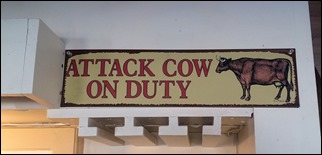 We paused on our way through Big Pine for a nice BBQ lunch at Holy Smokes, under the watchful eye of the restaurant’s Attack Cow. The Schat’s Bakkery (sic) across the street tempted us also, but we were brave, and resolute.
We paused on our way through Big Pine for a nice BBQ lunch at Holy Smokes, under the watchful eye of the restaurant’s Attack Cow. The Schat’s Bakkery (sic) across the street tempted us also, but we were brave, and resolute.
Just across the valley, and a bit north from Big Pine, is the Caltech VLBA — Very Long Baseline Array. This is a big collection of radio-astronomy “telescopes”, which are not like the big glass monsters we’re so accustomed to. These are more like radar antennae, and for good reason: they are looking at the radio-frequency (RF) part of the stars’ spectra.
From a few miles away, these look like strange white dots on the landscape.
Getting closer, the scope and size of the operation becomes more obvious. Many of the access roads were placarded (Authorized Vehicles), so we behaved ourselves and didn’t get too close to most of the installation.
This one didn’t have any “No-No” signs, so we pulled right up to the gate (which had a cool information sign on it). The big dishes are 82 feet in diameter, so they stand as tall as a 10-story building.
We were reminded of the gigantic VLA (Very Large Array) over in New Mexico, where we had visited a few years ago. I hope to do a post on that place in the future, but for now, here’s a couple of shots just as a teaser (it was a winter trip).
All these arrays of radio telescopes (at least 10 of them) don’t operate strictly independently; they function in conjunction with each other to form huge “virtual arrays” that allow probing to the very limits of interstellar space. It’s impressive, a little spooky, and the technology is fantastic. In order to operate collaboratively, the telescopes must each sync to an atomic cesium clock, so that their measurements can be precisely aligned in time. Non-mathematicians need not apply.
THE VOLCANIC FLATS
We left the VLBA and drove north on US395, through Bishop and onto Casa Diablo Mine Road. This very decent dirt road (like 20-40mph) weaves across an amazing piece of geology.
About 750,000 years ago, a DB-class volcano (that’s Damn Big) spewed out 150 cubic miles of ash. Some of it ended up as far east as Nebraska, but most of the ash settled right into the northern end of the future Owen’s Valley. Covering an area of well over 100 square miles, the ash built up huge deposits, over 3000 feet thick in some areas. Cooling and settling, it became the Bishop Tuff formation we know today.
The road took us across the flats, and alongside the Owens Gorge — almost invisible off to the west — where we’ll have to do more exploring at some other time. All along the road, there are dozens of side-tracks leading to who-knows-where. We saw some vehicles camped at arbitrary pull-outs; it’s a really big area that begs for more exploring.
At the northern edge of the flats, the road climbed up into the hills toward its namesake mine. Well, that mine must have seen some much finer days (it was a mercury-mining operation, and mercury was essential for gold mining). We could find very little of anything noteworthy, which sometimes happens with these old mines. Some of them, like the Morningstar over in Mojave Preserve, are spectacular historical ruins, and some, like this one, are barely more than loosely organized piles of rubble.
As with most old mining roads, the track got more and more gnarly the further we went, until finally it was just too much trouble. Ralph could have made it up the ruts and through the brush, but it was late in the day, and one should always plan on reserving enough time to get un-stuck from the occasional predicament. We walked instead.
We pushed even further north, and rather than heading back the way we came, we drove up to Benton Crossing Road. This allowed us a paved route back to US395 and a shorter ride back to camp. The road loops way up around the northern tip of Lake Crowley, which occupies the Long Valley Caldera — the sole remnant of the volcano that produced the Volcanic Flats. Just like Yellowstone, it’s hard to “feel” like you’re sitting in the middle of a volcano. Just looks like a sprawling lake.
Back down US395, the late afternoon sun barely shows the blended-in outlines of Bishop. It’s that slightly-darker streak across the middle of the picture. It looks bigger than its statistics bely: only 3700 souls population as of 2016. Another 15 miles south is Big Pine, and our camp for another night.
STILL CURIOUS?

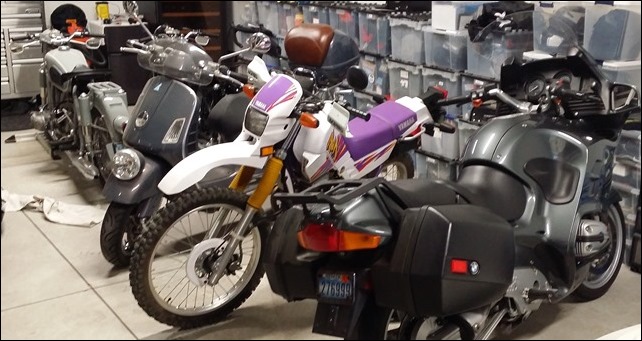
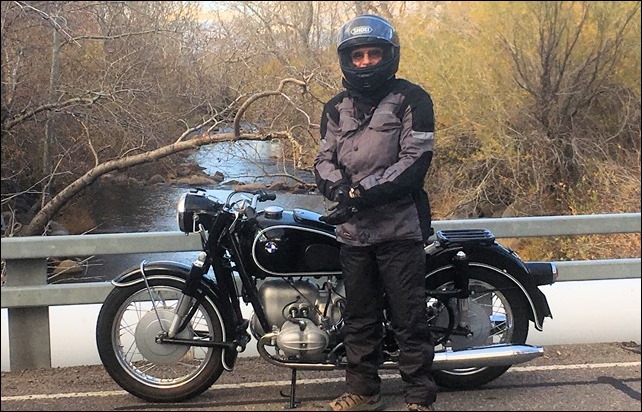
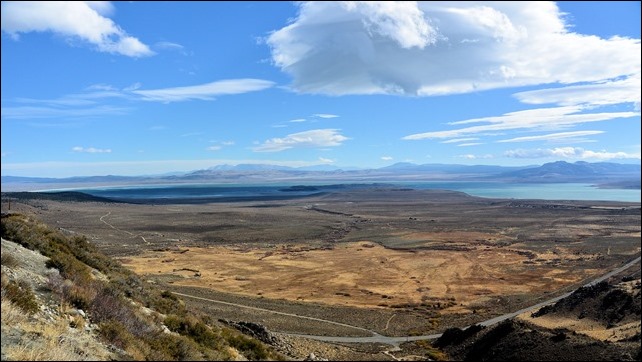
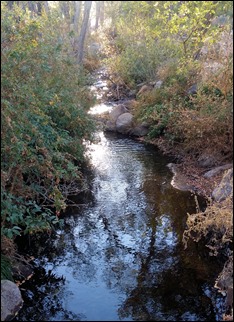
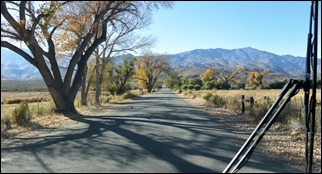
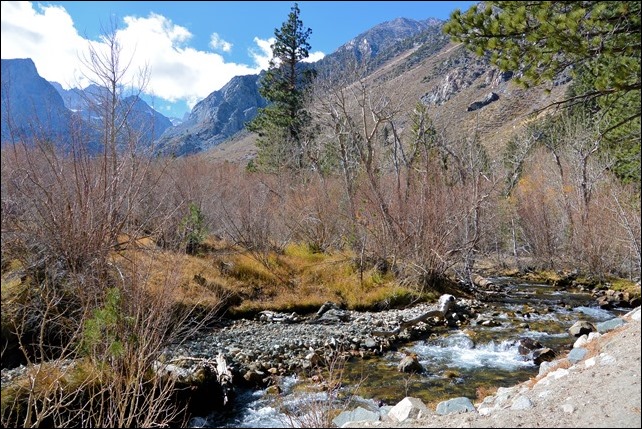
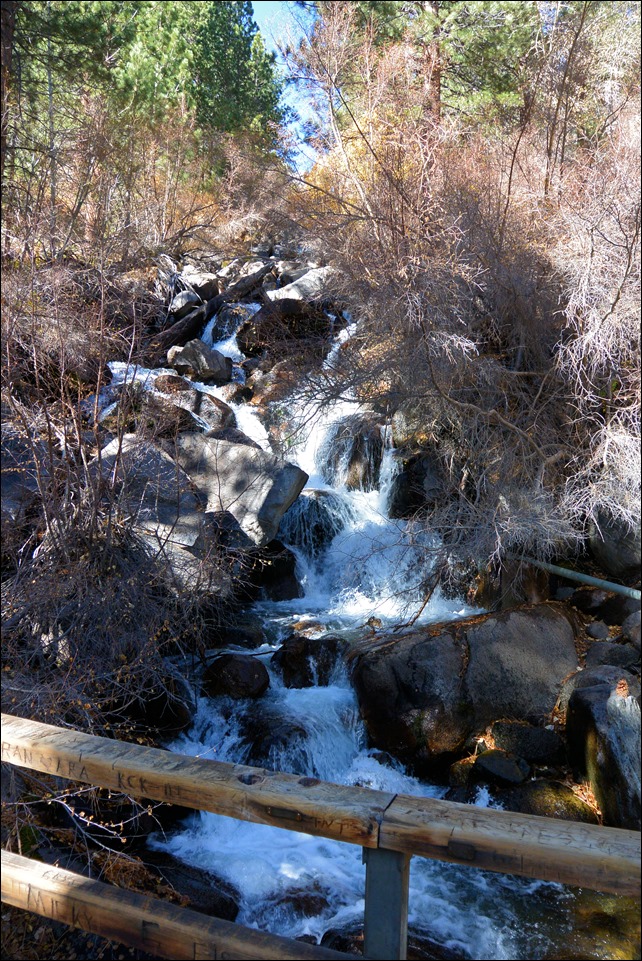
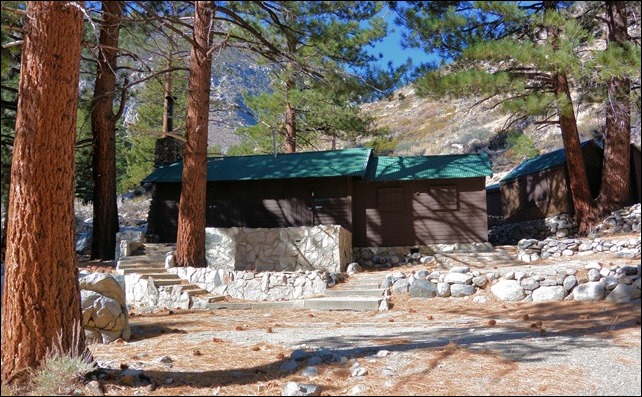
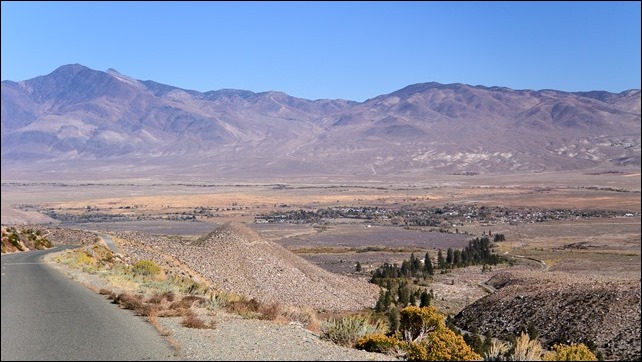
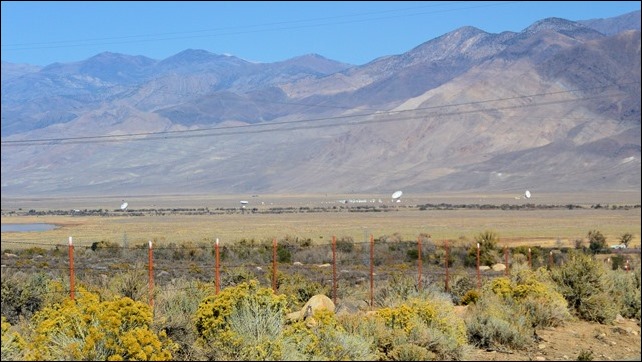

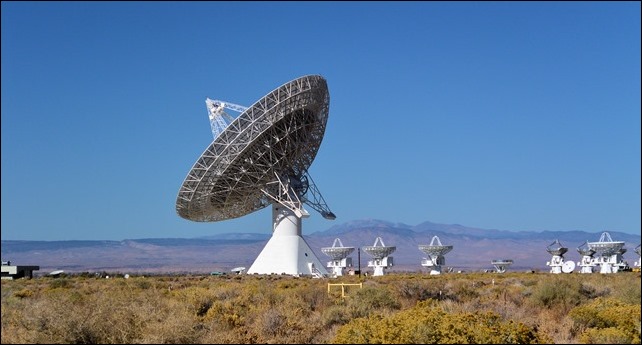
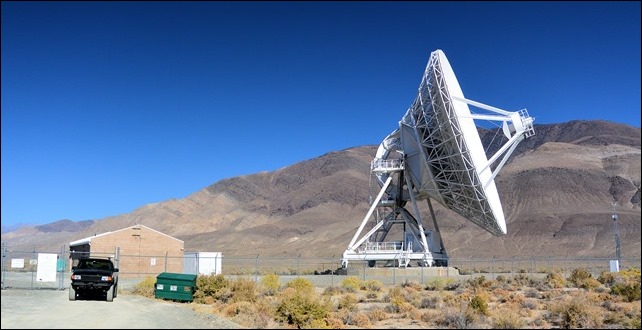
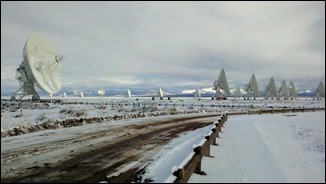
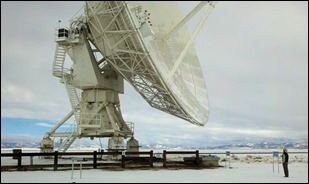
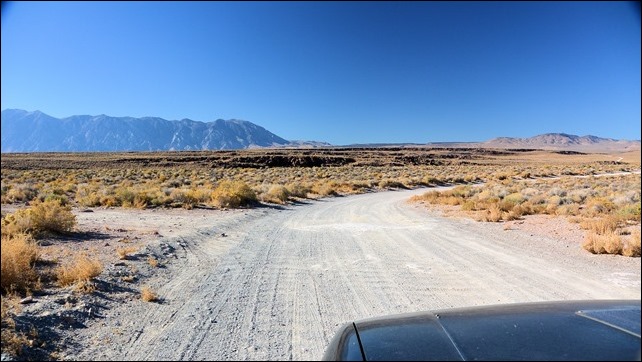
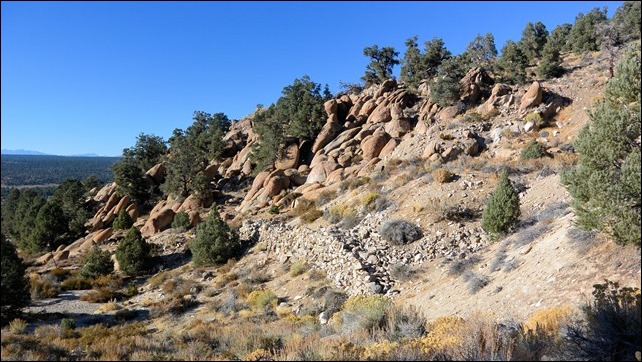
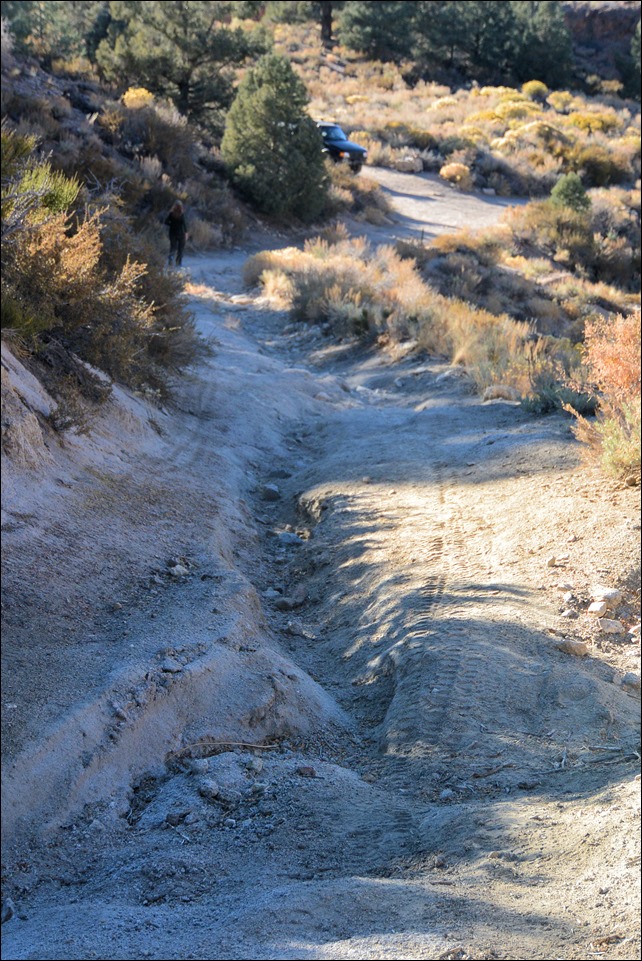
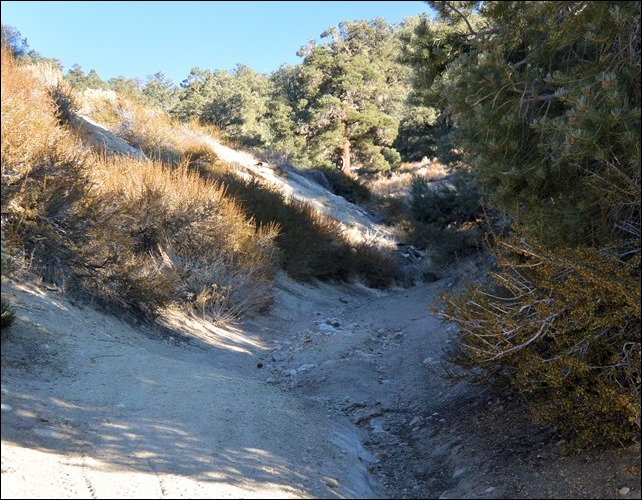
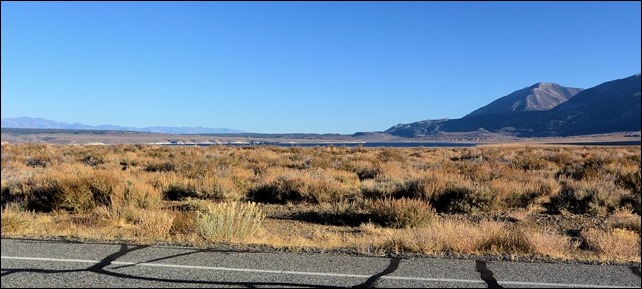
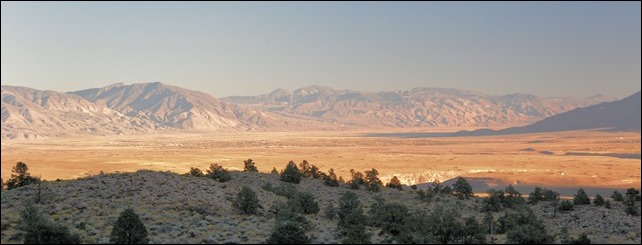
as always very interesting pics about the your and my lands ..keep on trucking pilgrim..
tony lem / marlene…one of these days our time will come and follow your lead..
Thanks Greg. Will be driving from San Diego direct to Bend, OR then back on a leisurely route via Burns-Frenchglen-Winnemucca-Battle Mt-Austin-Tonopah-Death Valley-home in January. Your posts on ION have been very inspirational and are much appreciated! Looking forward to spending a lot of time up there in the middle of nowhere.
Will, that’s a chilly route that time of year, but absolutely gorgeous. Stay warm and have fun.
G.